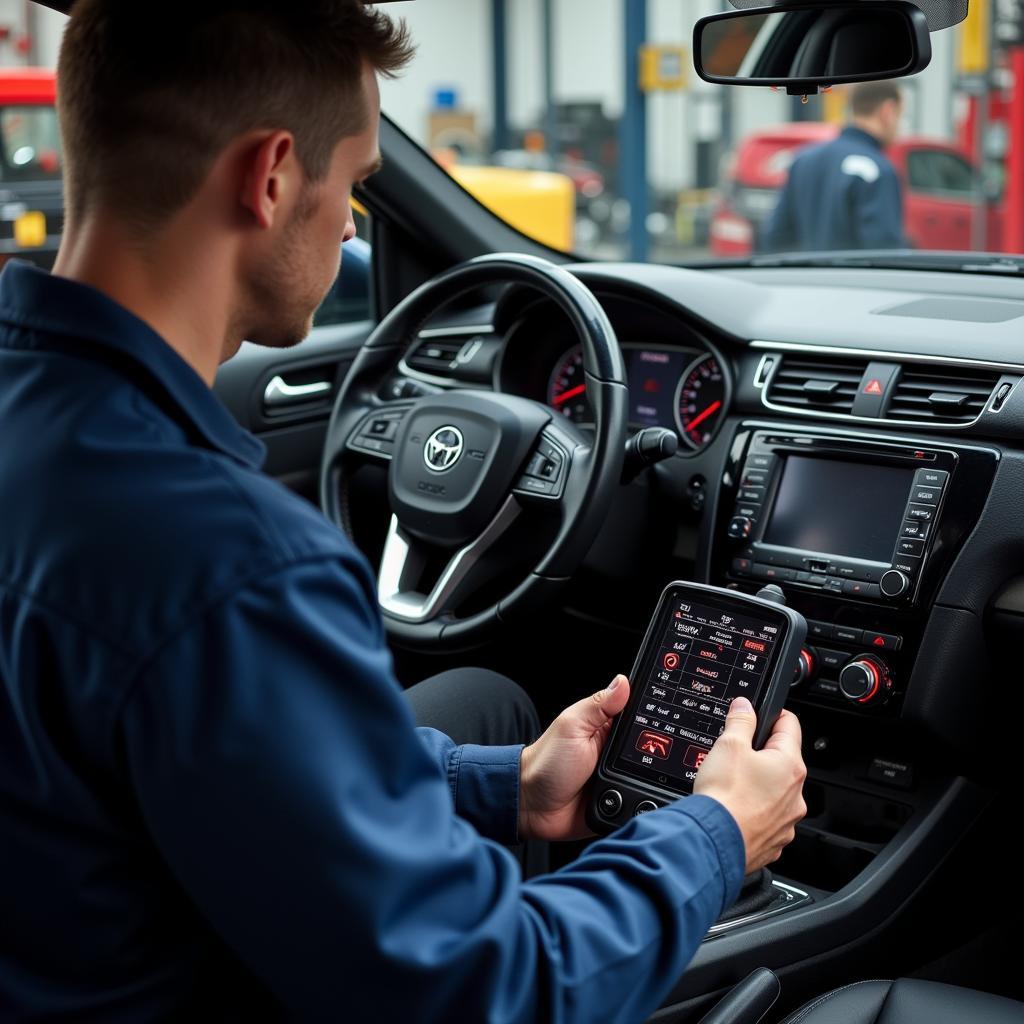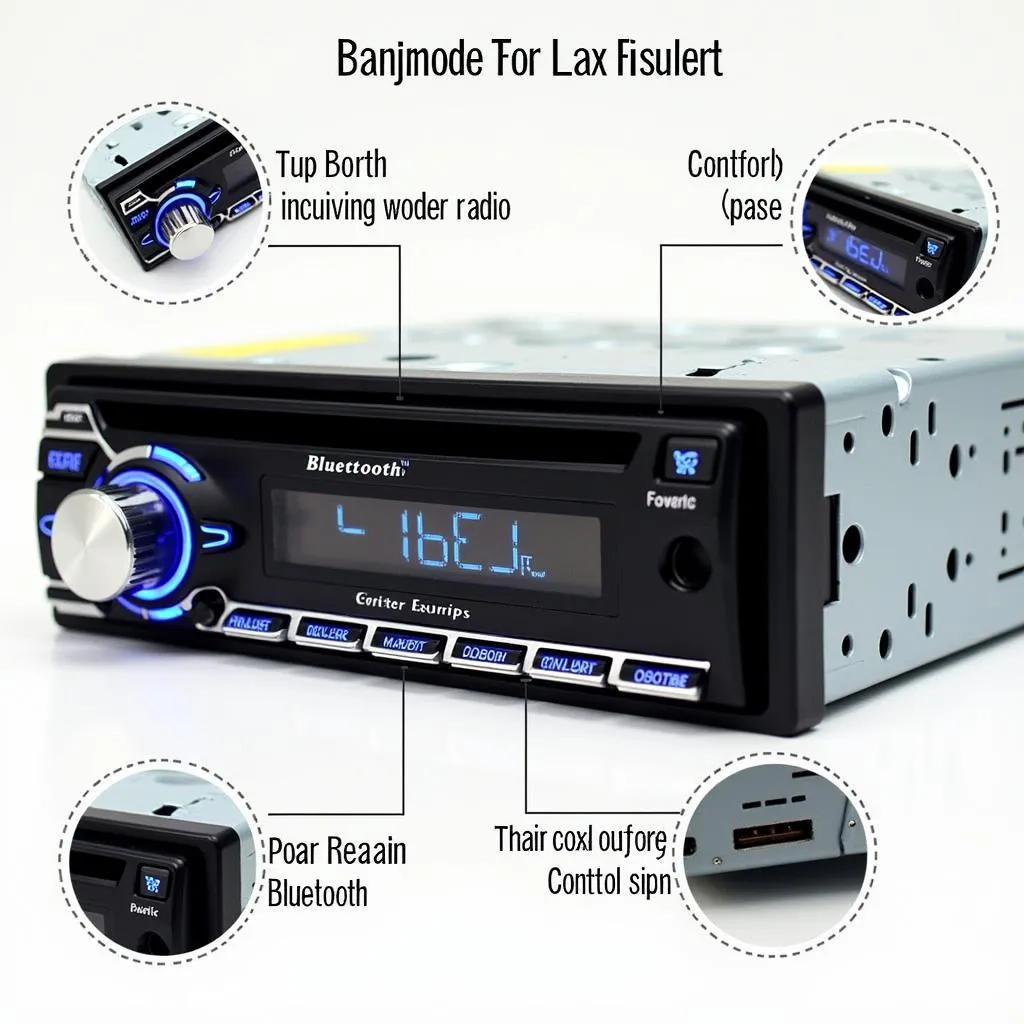The anti-lock brake system (ABS) warning light is a crucial indicator on your dashboard that illuminates when a potential issue is detected within your vehicle’s ABS. This system plays a vital role in maintaining control and stability during hard braking situations by preventing the wheels from locking up. When functioning correctly, the ABS warning light should briefly illuminate when you start your car and then turn off. However, if the light remains on, flashes intermittently, or fails to light up at all, it indicates a problem that requires attention.
Understanding the Role of Your ABS
Your car’s ABS is a sophisticated safety feature that utilizes sensors to monitor the speed of each wheel during braking. If the system detects a wheel locking up, it rapidly releases and reapplies braking pressure multiple times per second. This process, often felt as a pulsing sensation in the brake pedal, prevents skidding and allows the driver to maintain steering control, significantly improving vehicle stability and reducing stopping distances, especially on slick surfaces.
Common Reasons for an ABS Warning Light
Several factors can trigger the ABS warning light. Recognizing the typical causes can provide valuable insights into the potential problem with your vehicle. Here are some of the most common culprits:
- Faulty ABS Wheel Speed Sensor: One or more malfunctioning wheel speed sensors, responsible for relaying wheel speed data to the ABS control unit, can trigger the warning light.
- Damaged ABS Tone Ring: The ABS tone ring, a toothed ring attached to the wheel hub, can become damaged, disrupting the signal to the sensor.
- Issues with the ABS Control Module: Problems within the ABS control module, the system’s brain, can also cause the warning light to activate.
- Low Brake Fluid Levels: Insufficient brake fluid, often due to a leak in the system, can impact ABS functionality and trigger the warning light.
- Worn Brake Pads: While not directly related to the ABS, severely worn brake pads can sometimes interfere with the system’s operation.
What to Do When the ABS Warning Light Turns On
Ignoring an illuminated ABS warning light is never advisable. If the light comes on and stays on, flashes, or doesn’t illuminate at all:
- Assess Your Surroundings: If possible, safely pull over to the side of the road.
- Check Your Brake Fluid: Carefully inspect the brake fluid level in the reservoir. If it’s low, adding more might temporarily resolve the issue, but a leak likely exists, requiring immediate attention.
- Proceed with Caution: If you must drive, exercise extreme caution. Remember, your regular brakes should still function but without the added safety net of ABS.
- Schedule a Diagnostic Scan: Contact a qualified mechanic specializing in automotive electrical systems as soon as possible for a comprehensive diagnostic scan.
 Mechanic Diagnosing ABS Problem Using a Scan Tool
Mechanic Diagnosing ABS Problem Using a Scan Tool
The Importance of Timely ABS Diagnosis and Repair
Timely diagnosis and repair of ABS issues are paramount for several reasons:
- Enhanced Safety: A functioning ABS is crucial for maintaining control and stability during emergency braking situations.
- Preventative Maintenance: Addressing ABS issues early can prevent more extensive and costly repairs down the line.
- Legal Compliance: In many regions, driving with a malfunctioning ABS system is illegal.
How Remote Diagnostics Can Help
In today’s technologically advanced world, remote diagnostics and software solutions are transforming automotive repair. Qualified technicians can remotely access your vehicle’s computer system, retrieve diagnostic trouble codes, and often pinpoint the root cause of the ABS problem without requiring a physical inspection. This remote approach offers significant advantages in terms of speed, convenience, and potentially lower costs. Once the issue is identified, the technician can recommend the appropriate course of action, whether it involves a software update, component replacement, or further in-person inspection.
Conclusion
The ABS warning light, a small but significant indicator on your dashboard, plays a vital role in communicating the health of your vehicle’s anti-lock brake system. Understanding what triggers this warning light and the importance of prompt diagnosis and repair is essential for maintaining optimal vehicle safety and preventing potential hazards on the road. Remember, a proactive approach to vehicle maintenance, including addressing warning lights promptly, ensures a safer and more enjoyable driving experience.
FAQs
1. Can I drive my car with the ABS light on?
While you can technically drive a short distance with the ABS light illuminated, it is highly discouraged. Your regular brakes should still work, but you will not have the added safety of ABS, significantly increasing the risk of accidents, especially in slippery conditions.
2. Is it expensive to fix an ABS problem?
The cost of ABS repair can vary significantly depending on the underlying issue, make and model of your vehicle, and labor costs in your area. A faulty wheel speed sensor is typically a less expensive fix than a malfunctioning ABS control module.
3. How often should I have my ABS system checked?
It’s generally a good practice to have your entire braking system, including the ABS, inspected annually or as part of your regular vehicle maintenance schedule.
4. Can a low battery cause the ABS light to come on?
While a severely low battery can sometimes trigger various warning lights, it’s less common for it to directly cause the ABS light to illuminate. However, a weak battery can impact the performance of various vehicle systems.
5. How long does it take to fix an ABS problem?
The repair time for an ABS issue can vary depending on the diagnosis. A simple sensor replacement might only take an hour or two, while more complex problems could require several hours or even days to diagnose and repair fully.

